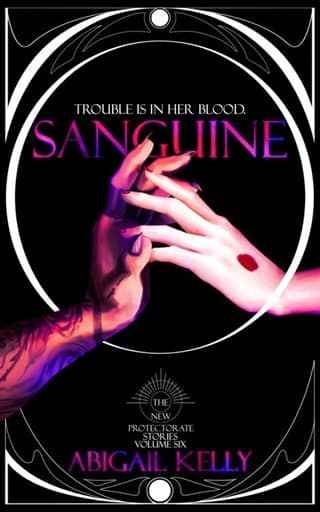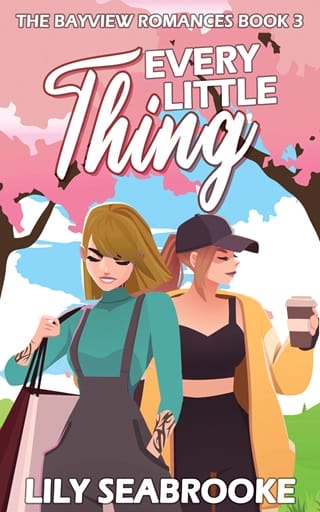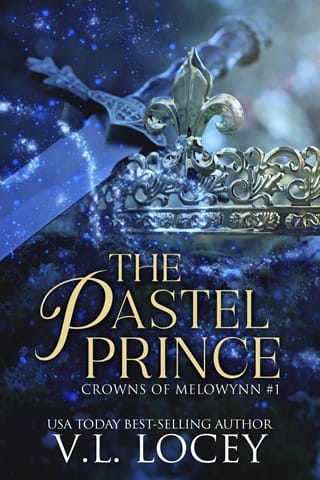Glossary
Places
United Territories and Allies: What we would consider the continental USA. A loose federation of sovereign states established after the Great War. The UTA capital is United Washington, in the Neutral Zone.
The Elvish Protectorate: Also known as the EVP. Stretches from Oregon to New Mexico. Capital city is San Francisco. Led by the elvish sovereign Theodore Thaddeus Solbourne.
The Coven Collective: Also known as the Collective. Encompasses Washington state. Capital city is Seattle. Led by a large coalition of witch covens, with Sophie Goode acting as their leader.
The Orclind: Encompasses much of the Midwest. Led by the Iron Chain, a close-knit government made up of orcish clans and family groups. Capital city is Boulder.
Shifter Alliance: Takes up a section of the midwest and all of the south. (Unfortunately includes Florida.) Run by a very, very loose alliance of shifter packs from three capital cities — Minneapolis, Oklahoma City, and Atlanta.
The Draakonriik: Also known as the ‘Riik. The second smallest territory, it takes up all of the Great Lakes region and stretches to New York. Led by Taevas A?daja, the Isand (ee-zand) of the dragon clans. Pronounced: dra-kon-reek
The Neutral Zone: Also known as the New Zone. Technically it is held by a coalition government consisting of representatives from the UTA, but in reality it is run by a syndicate of feuding vampire families. It is a small strip of land squeezed between the Draakonriik and the Shifter Alliance.
Gods
Light & Darkness: The primordial gods who created all the others. Also known as The Lovers and First Union. Both are generally represented as female.
Loft: God of the sky and creator of flying beings. Twin sibling to Tempest. They know no gender. Also known as the Boundless One.
Tempest: God of the ocean and creator of all water beings. Also known as the Hungry God and the god of love.
Burden: God of the Earth, creator of all beings who live within it — most notably the orcs. Husband of Glory.
Glory: Goddess of sunlight, magic, and creator of elves. Worshipped by witches for giving the gift of magic to humanity.
Blight: God of forested places and disease. He works in partnership with his daughter Grim and shares her dominion over demons and all reviled creatures.
Grim: Goddess of death. Known as the Merciful One and the Brilliant Lady. She is widely beloved.
Craft: God of change, newness, and messengers. Creator of humanity and viewed warily by non-worshippers as the Chaos Maker. They change their gender frequently, but generally is referred to using he/him pronouns.
terms
Alpha: a broad term used by many communities generally associated with a leader — either of a small family group, a pack, or even a territory.
Anchor: a vampire's mate. Anchors are carefully chosen and usually longterm-to-permanent arrangements, as they take considerable energy to make/become. A vampire must inject their venom into a host many times before their blood chemistry adjusts such that they become unsuitable for consumption by another vampire and their sleep cycle switches to a nocturnal pattern. At this point, they can can also produce/carry to term a vampiric child. Temporary anchors do exist, although they are relatively rare due to the intense withdrawal symptoms associated with ending the regular venom intake.
Arrant: someone born without m-paths, or the ability to channel and use magic.
Burnout: the colloquial name for the degenerative medical condition caused by excessive magic in humans. Over time magic can damage nerves and brain tissue, which will inevitably result in death if not treated with with development of a witchbond.
Change: an elvish term for a sudden shift into adulthood. This is marked by 5-14 days of "madness", usually triggered by some stressful event around the age of 16-18. The elvish body is flushed with hormones to the point where sudden growth, overwhelming hunger, and aggression take over. Viewed as an incredibly vulnerable time, only immediate kin are charged with the care of their loved ones — which includes isolating them, preventing harm to themselves/others, and feeding them. The change marks the second phase of an elf's life, when they are no longer coddled children but young adults who can accept challenges and family responsibilities. Formal adulthood is attained at 30.
Changeling: a term first used to refer to fey children fostered out to non-fey homes, now more widely used to mean any person raised by people who are not the same beings. Ex: A dragon couple raising a human child.
Chosen: the formal term for a dragon's mate. The act of finding a mate is called Choosing, and is considered sacred.
Consort: an elvish mate. A term used exclusively by elves to refer to someone they are biologically compelled to pair up with. This usually involves intense sexual attraction, but can vary from person to person.
Dragon: a person with a dual form. In their bipedal form, they have claw-tipped wings, horns, and a tail. In their quadrupedal form, they are roughly the size of a standard SUV and can fly at extremely high altitudes for weeks at a time. They come in a variety of extremely saturated colors that shift with the time of day (light to dark). They breathe cold blue fire and can see the Earth's magnetic field. Identifying mating feature is marked change in behavior, including the overwhelming urge to nest.
Elemental: a being created by a spontaneous magical eruption. They often take on the attributes of whatever weather they happen to be born into, i.e. a lightning storm might produce a lightning elemental, or a blizzard might make a snow elemental.
Empath: a person with the ability to feel and manipulate the emotions of others.
Elf: someone born with jewel-toned skin, claws, pointed ears, and four fangs. Very secretive and considered apex predators who require a strict hierarchy to function. Average height of 6-7ft. Identifying mating feature is the retraction of claws.
Fever: shifter mating imperative triggered by the "animal's" choosing of a mate. Marked by a perpetual near-shift — elevated body temperature, increased aggression, build-up of magic, and the compulsion to mark. A shifter displays their readiness to find a mate by creating a den.
Fey: a person with nearly vestigial, insect-like wings, small fangs, and claws. Usually live in large groups. Identifying mating feature is bioluminescence.
Foresight: the ability to see multiple possible futures. The average number is between 2-4, with the likelihood mental instability increasing with each subsequent possible future.
Great War: a conflict between the territories of the North American continent that began in 1817 and ended in 1917 with the signing of the Peace Charter, which established the United Territories and Allies of modern times.
Halfling: the elvish term for an elf with mixed heritage.
Healer: a person who possesses the ability to see into and heal bodies through touch.
Isand: the title of the leader of the Draakonriik. Pronounced ee-zah-nd
M- : M- is frequently used as shorthand to denote when something is infused or otherwise combined with a magical element.
Marriage Sigil: a custom symbol branded into the foreheads of spouses (pairs or multiples). Each one is unique and infused with a small amount of magic as a reminder of the power love holds. They are typically sought out by worshippers of Glory — mainly witches and arrants. Elves, though worshippers, don't usually take a marriage sigil when they find their consorts or form a unions with other elves.
Mate: a catchall term for a significant other. Used by many cultures, it has varying degrees of weight. To shifters, orcs, and demons, the word mate is synonymous with family, monogamy, and dependence. It is much more loosely used within arrant society, as well as amongst elves, who generally prefer the term consort.
Met: acronym for magically enhanced tech. A branded home assistant that can do everything your Alexa can, as well as small, low-level magic to help around the house.
Metallurgic Inoculation: a vaccine given to all elves within hours of birth to make them immune to iron poisoning.
M-siphon: a containment device used to imprison a magical being and siphon off their magic. Highly illegal.
R-siphon: also known as reverse siphon. New technology that redistributes magic away from the siphon instead of into it.
M-lev: a play on maglev, meaning a high speed train that levitates using magnets. In this case, magnets and magic.
M-weather: magic weather. Very common, but can result in "clusters" or storms that wreak havoc if not properly contained. In rare circumstances, it can also produce a sapient being known as an elemental.
Orc: a person with green, gray, russet, or blue skin, two fangs, and claws. Widely renowned for their strength and beautiful voices. Identifying mating feature is "the kohl", or altered, dark pigmentation of the hands and feet developed after meeting their mate.
Pixie: a small, winged creature with compound eyes with about the same level of intelligence as a rat. In the wild they live in trees and in burrows, but have adapted to living in walls, pipes, mailboxes, etc.
Pull: elvish mating imperative. A sudden hormonal shift caused by exposure to a compatible partner's pheromones, marked by the retraction of claws and volatile mood shifts. The pull is only "satisfied" when hormone binding occurs — the term for long term exposure to a mate, resulting in permanent biological dependence on their pheromones. This process increases fertility and often results in the conception of multiples. Lack of exposure to a mate can cause severe physical reactions (lack of appetite, muscle pain, headaches, insomnia) as well as the deterioration of mental stability.
Shifter: a person who can shift into an animal form. They can partially shift (changing only parts of their bodies at will) and often take on characteristics of their other half. Famous for their strength and tenacity, as well as their dual-voiced "shifter purr" which many people find deeply attractive. Usually found in packs.
Sigil: a symbol used to channel magic. Western countries use the alchemical alphabet formally codified in the 1800's, though many, many variations are used all over the world.
Sovereign: the title of the ruler of the Elvish Protectorate. It is capitalized when used in place of a name.
Turbo Virgin (c): Theodore Thaddeus Solbourne, Sovereign of the Elvish Protectorate and Head of the Solbourne Family.
Union: an elvish marriage. Usually done for financial, political, or procreational benefit. The parties involved are not fated or biologically compelled to be with one another, and might have many lovers or even a consort outside of their union.
Vampire: a person who drinks blood to survive and cannot go out in sunlight. Vampirism can only be "caught" with the exchange of fresh blood, and as of 2045 is much more widely spread through procreation. Vampires can only breed with their anchors. Identifying mating feature is marked change in behavior, including overwhelming desire and need for total isolation.
Ward: a magical barrier with varying levels of protection. A ward can be something as simple as a proximity alert — "someone walked into my garden" — or as complex as full on defense — "someone crossed the threshold and has now burst into flames". The severity of the ward depends on the complexity of the sigils used to create them, and wards can have many layers, each one with a unique purpose. Personal wards can also be used, such as in clothing or embedded into jewelry, though they tend to be expensive and difficult to foolproof.
Were: a person infected with the were virus, a much mutated strain of the vampirism virus, resulting in altered physiology and magical ability. They can be identified by their heterochromia, or different colored eyes. They are the newest magical race and viewed warily by the general public for a variety of earned and unearned reasons. Identifying mating feature is marked change in behavior, including highly increased territorial instinct and the urge to nest. Pronounced ware.
Witch : Humans with the ability to use magic, which is passed down genetically. A person needs to be born with m-paths (a unique nervous system) to use it, however, humans were not initially adapted to use magic safely. Geneticists believe they acquired the ability through interbreeding with other beings. This interbreeding resulted in many unique qualities, such as the massive variety of abilities, power levels, and unique skills known to select families. However, it is also responsible for "burnout", which is the degenerative neurological condition a witch with mid-to-high level power will experience if they do not share their magical load with another being via witchbond. Witches are classified from least to most powerful — brightling, brilliant, and gloriana.
Witchbond: a magical bond formed between a witch and another being. Due to the nature of magic and humanity's much more recent adaptation to it, witches of brilliant and gloriana power must form a bond with another being usually beginning around 150-200 years old. This bond filters magic through the other being, neutralizing its damaging effects and reducing the chances of burnout to almost none. This bond also gives a power boost to the partner. A witchbond is permanent and can only be severed if one of the partners dies, at which point the surviving partner can form a new bond. Though commonly associated with a romantic partner, a witchbond is not inherently romantic and can be shared with a friend, sibling, or (ill-advised) an enemy.
Pronunciation guide for names of important characters in this book
Carmine Safi: kar-mine sa-fee
Atticus Caldwell: at-ih-kus cawld-well
 Fullepub
Fullepub 



